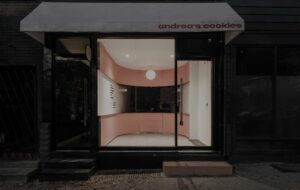|
|
||
|
The collective’s shortlisting for the prestigious art prize demonstrates an audacity that the architecture profession is conspicuously lacking, says Sam Jacob Assemble‘s shortlisting for the Turner Prize is a real, “What?” moment. What, first of all, is architecture even doing on the list? It seems like a reversing of the recent tendency for art to suck everything else into its orbit. Over the past 30 years, the art world has ballooned, pumped full of money and the spectacle of gigantic galleries and huge spaces. Art during this time has devoured everything around it: architecture, design, cinema, literature. Art practice has expanded, while the applied arts have seemed to shrink in proportion. And, with this shrinkage, the only validation for architecture and design has been success in market, rather than in disciplinary or cultural, terms. There are countless examples of assaults by the art world on the traditional realm of architecture. The forms, narratives and politics of the built environment, even the idea of space, have been recurrent themes in recent artists’ work – and rightly so, because it’s such important stuff. But the result has been that little space is left in the creative fields for unorthodox or alternative forms of practice. For those of us who have been fighting the good fight for architecture to exist on its own terms, rather than as a service provider to the property industry, this recognition can be nothing but great news. The boldness of Assemble’s shortlisting also exposes the fear at the heart of the architecture profession. Think, in comparison, of the fraught and fragile professionalism that surrounds the Stirling Prize – from filling the jury with non-architect minor celebrities because we’re too afraid of “capital A” architecture, to the arguments as to whether projects even qualify as architecture. This Turner nomination shows all of that for what it is – the nervous twitch of a profession without direction. At the same time, it exposes the philistine attitude of the art world to almost every other form of creative practice. Why, we might ask, Assemble? And why now? What quirk of fate led to this happening when it could have been so many others, so often? But, for a moment at least, Assemble – not chasing property’s golden carrot, with no gallery backing, no PR positioning – represents something different: a validation of the belief that there are other ways of doing things. Perhaps this is an even more audacious land grab by art over architecture. There’s no chance in hell of a practice like Assemble picking up a Stirling prize – they are far too young, far too out-there, far too un-architectural. Their Turner shortlisting should be a wake-up call to the thing that likes to call itself “the profession”. If you don’t value real disciplinary innovation, you’ll forever find yourself defensively protecting your ever-decreasing patch. Instead, it’s time for you to stand up and support the future. In the 2014 Icon Awards, we named Assemble Emerging Architecture Practice of the Year. Read Oliver Wainwright’s profile of the collective from our January 2015 awards issue |
Words Sam Jacob
Above: The Playing Field theatre in Southampton, by Assemble |
|
|
||


















